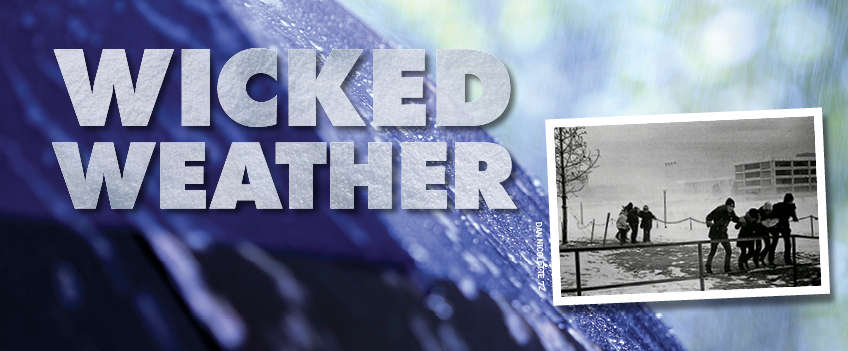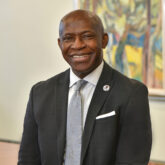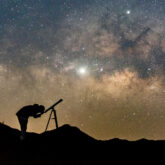“They’re local, so their forecasts are a little more accurate, a little more specific,“ Jamerson said. “They are really good at pinpointing the very time a storm will go through. Like we’ll be thinking of dismissing at noon, but they’ll say, ‘No. It will be worse at noon than at your regular dismissal time.’”

The student-staffed Lake Effect Storm Prediction and Research Center opens for business at 4 a.m., serving mostly school districts from November through March.
Ten meteorology students run the Lake Effect Storm Prediction and Research Center. They use what they’re being taught in the college’s meteorology department and the latest weather models on sophisticated computer software to forecast what is going to happen in Oswego hour by hour for the next day.
From this information, superintendents and transportation supervisors can decide whether they should open schools on time, later than normal or close for the day.
Working out of Oswego’s meteorology lab in Hewitt Union, the Lake Effect Storm Prediction and Research Center opens for business at 4 a.m., when the student meteorologist on call checks the equipment to see if anything mean-looking is heading across Lake Ontario.
“Lake effect snow is very unpredictable — it’s a challenge,” said student Ben Noll ’13. “We utilize forecast models that don’t always put the (lake effect) bands in the right place.”
“We have to learn more about all the different models so we can better anticipate where the snow bands will go, “ said Jordan Rabinowitz ’13.
The Lake Effect Storm Prediction and Research Center was the brainchild of Scott Steiger ’99, an associate professor of meteorology at Oswego. He oversees the development and operations of the center, including recruiting students to do forecasting, leading planning meetings, developing research goals and scheduling forecasters. The number of student participants varies depending on current research objectives and the number of forecast clients.
So far this year, the Oswego City School District and Oswego County BOCES have contracts with the center, which began about five years ago. Others may sign up as the season progresses. Districts pay $400 a month, money that’s used to buy equipment.
“I thought it would be a big help to school districts and others to get personalized forecasts and have a meteorologist they can call at any time, “ Steiger said. “And this is a great opportunity for the students to apply what they learned.”
Robert Peters, Liverpool school district transportation director, said Liverpool used the center a few years ago, but doesn’t now. He said the
students’ forecasts were accurate
and helpful.
“We could find out what they think, is a storm coming our way, “ Peters said. “They’d provide us with information regarding storms that we were able to use to keep the kids safe.”
Brian Donegan ’13 and Tara Heck ’13 direct the center. “We do forecasts for the schools, we update forecasts throughout the day and we’re on call 24 hours a day seven days a week, “ Donegan said. “We also update our website at 4 a.m., 10 a.m. and 2 p.m.
each day.
“The most difficult thing about forecasting lake effect storms is their isolated nature,“ Donegan said. “It completely depends on the wind direction about a mile above the ground as to where the band will set up. Once that wind direction shifts, it shifts the band, so you really have to pay attention to the wind direction.”
The center’s service for school districts runs the winter season, Nov. 1 through the end of March.
— Debra J. Groom
Syracuse Post-Standard
You might also like
More from Uncategorized
Find the Founder! – Winter 2024
Find the Founder - Winter 2024 In the Winter 2023 Issue, the Sheldon statue can be found in the top left …
Fun From Reunion Weekend
Fun From Reunion Weekend More than 550 alumni from 61 different class years ranging from 1962 through 2023 returned to the …
From the President
From the President Dear Members of the Laker Community, It is my great honor to introduce myself to you in this, my …













